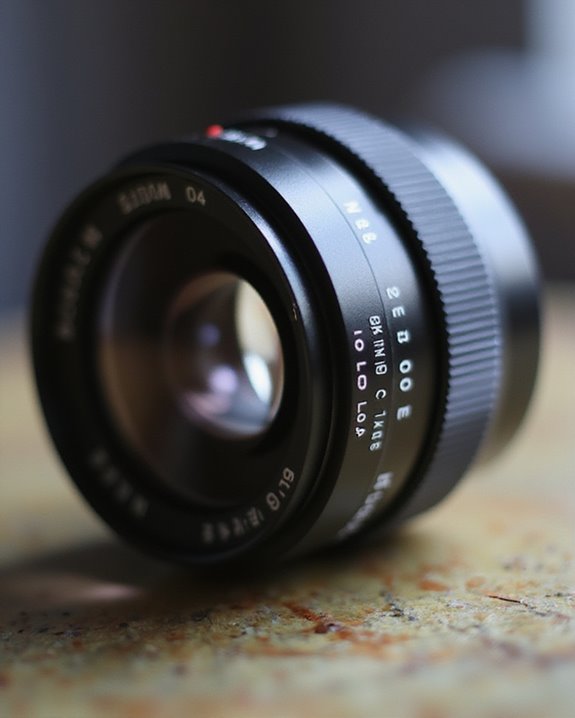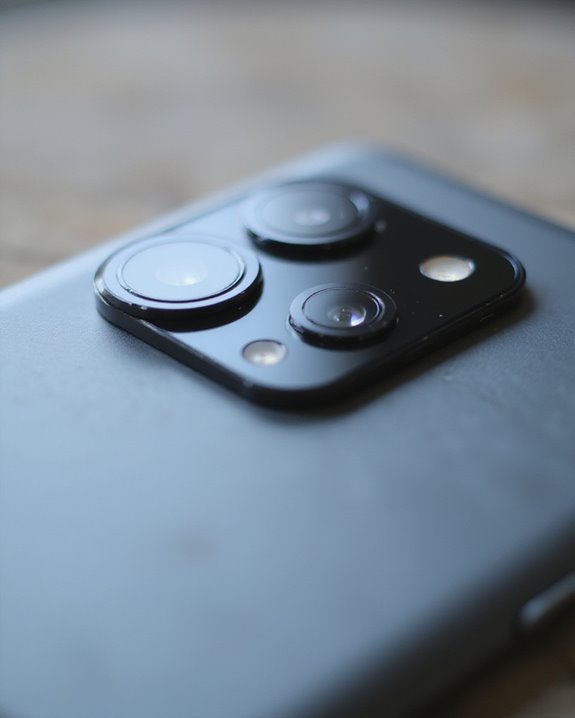When choosing a camera lens, we need to evaluate several key factors: focal length (wide-angle, standard, or telephoto), aperture (lower f-numbers for better low-light performance), and lens type (primes for quality, zooms for versatility). Match lens selection to your photography style—wide-angles for landscapes, 85mm for portraits, macro for close-ups. Evaluate build quality, weight, image stabilization, and budget limitations. Third-party manufacturers like Sigma and Tamron offer excellent alternatives to premium brands. The following sections will unpack these considerations in greater detail.
Key Takeaways
- Determine the appropriate focal length for your subject—wide-angle (14-35mm) for landscapes, telephoto (70-200mm+) for wildlife, or standard (35-50mm) for everyday shooting.
- Consider aperture needs, with lower f-numbers (f/1.4-f/2.8) for low-light performance and background blur, versus higher values (f/11-f/16) for landscape sharpness.
- Weigh the benefits of prime lenses (better image quality, wider apertures) against zoom lenses (versatility, convenience) based on your shooting style.
- Evaluate whether image stabilization is necessary for your shooting conditions, especially for handheld photography in low light.
- Factor in practical considerations like weight, weather sealing, autofocus technology, and third-party options that may offer comparable quality at lower prices.
Decoding Focal Length: What the Numbers Actually Mean
When we’re examining the specifications of a camera lens, what exactly do those focal length numbers signify? In the simplest terms, these figures, measured in millimeters, represent the distance from the lens’s nodal point to the camera’s sensor when focused at infinity. Throughout Focal Length History, this measurement has been fundamental to understanding how lenses capture images. The focal length directly determines several key characteristics: field of view, magnification, and perspective. Shorter focal lengths (like 24mm) provide wider angles of view, while longer ones (such as 200mm) offer narrower views with greater magnification. Optical Power Basics teach us that focal length is inversely related to optical power—lenses with shorter focal lengths have higher optical power, enabling them to bend light more dramatically. This relationship explains why wide-angle lenses create more pronounced perspective distortion compared to telephoto options. Additionally, understanding the sensor size is crucial, as it affects the effective focal length and the resulting image composition.
Prime vs. Zoom: Deciding Between Fixed and Variable Lenses
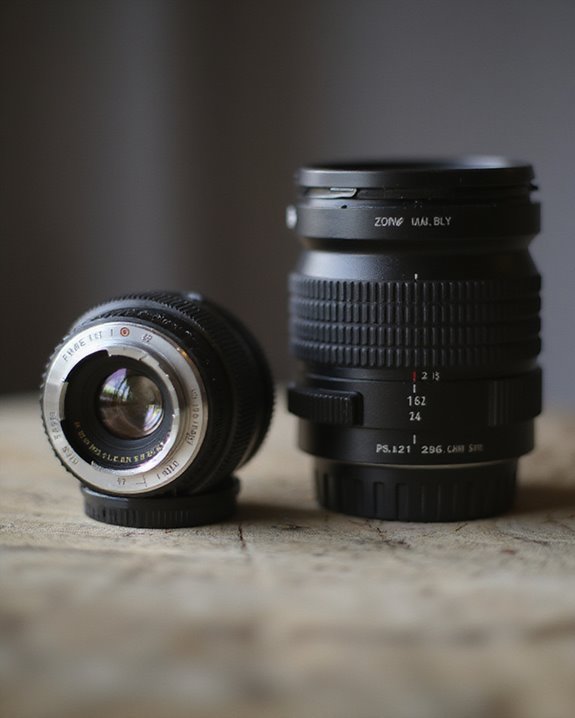
Why do photographers often agonize over the choice between prime and zoom lenses? The decision stems from fundamental trade-offs that have existed since the historical context of early lens development, when all lenses were fixed focal length. Prime lenses offer superior optical performance with sharper images, better low-light capabilities through wider apertures (typically f/1.8), and simpler, more durable construction. Conversely, zoom lenses provide unmatched versatility by covering multiple focal lengths, reducing gear requirements and enabling rapid composition changes.
When selecting between these options, we must consider your shooting style, budget, and quality requirements. While prime lenses generally deliver superior image quality and compact size at lower individual costs, zoom lenses offer convenience that’s invaluable for dynamic shooting scenarios. Future developments in optical engineering continue to narrow these gaps, but the essential distinctions remain relevant for serious photographers.
Understanding Aperture and Its Impact on Your Photography
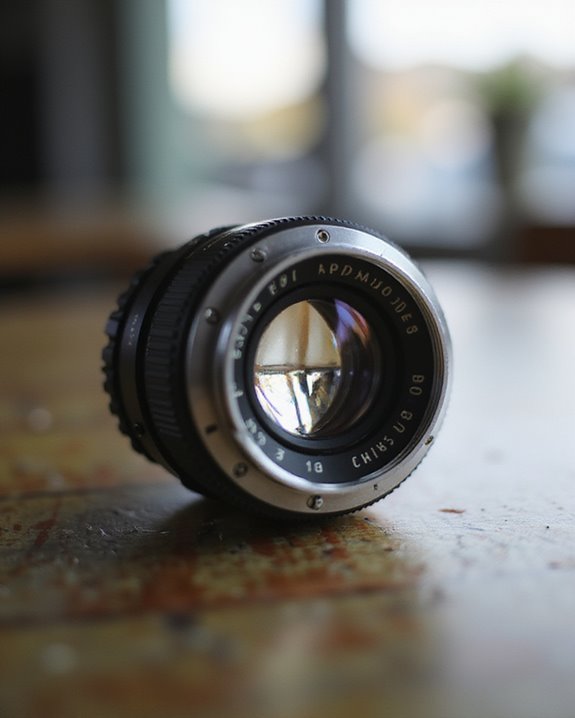
The aperture setting of your lens perhaps represents the most essential creative tool in a photographer’s technical arsenal. When selecting a lens, understanding its available aperture range greatly influences the images you’ll create. We’re particularly concerned with two aspects: exposure control and depth of field manipulation. Many photographers prefer shooting in Aperture Priority mode, which allows them to set the f-stop while the camera adjusts shutter speed automatically for proper exposure.
Lower f-numbers (f/1.4, f/2.8) create that coveted background blur for portraits, while higher values (f/11, f/16) keep landscapes tack-sharp throughout. However, be mindful of diffraction limits—most lenses experience sharpness degradation beyond f/16 due to light diffraction, regardless of price point. The maximum aperture also affects low-light performance, with “faster” lenses commanding premium prices but delivering exceptional results in challenging conditions.
Choosing a lens with a wide maximum aperture, such as f/1.4 or f/1.8, enables superior low-light performance, making it easier to capture clear images without a flash in dim environments.
Matching Lens Types to Your Photography Style
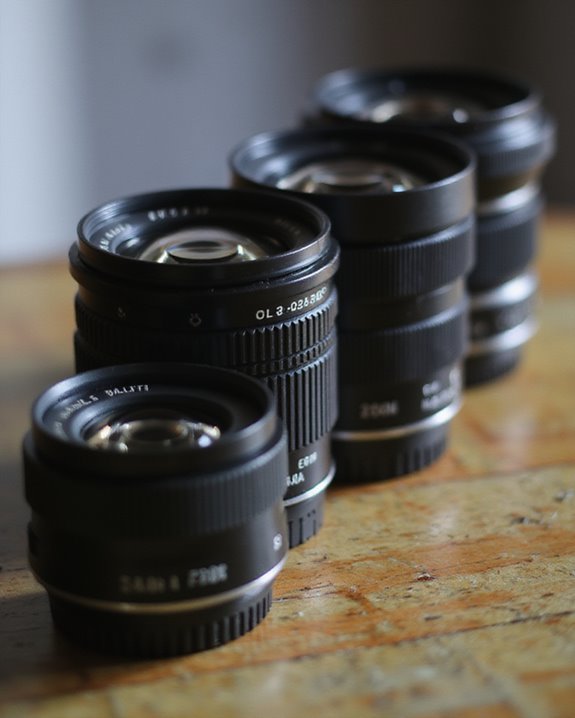
Selecting the appropriate lens for your photographic style isn’t merely about technical specifications—it’s about matching optical characteristics to your creative vision. We recommend focusing on Style Integration by pairing landscape photography with wide-angle lenses (14mm-35mm) for expansive scenes, or 85mm primes for flattering portrait proportions. Personal Adaptation means evaluating your typical shooting environments; wildlife photographers require super telephotos (300mm+) with weather sealing, while street photographers benefit from discreet 35mm or 50mm primes with silent autofocus systems. For macro work, dedicated lenses achieving 1:1 magnification ratios provide essential detail capture. When selecting zoom versus prime configurations, consider whether flexibility (24-70mm for changing terrain) or optical performance (prime wide-angles for astrophotography) better serves your workflow. Each photography discipline demands specific lens characteristics that optimize technical capabilities for artistic expression. Additionally, understanding the impact of lens build quality and weather sealing can significantly influence your choice, especially for outdoor and adventure photography.
Budget Considerations When Building Your Lens Collection
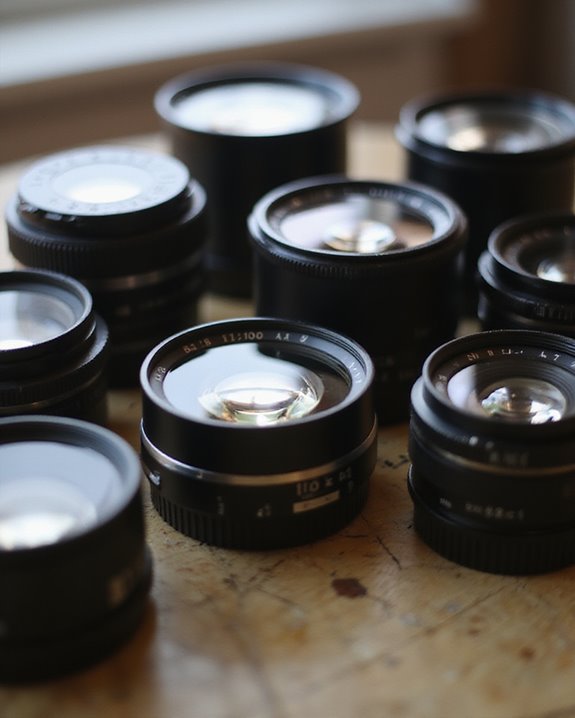
While identifying the perfect lens type for your photography style establishes artistic direction, financial planning represents an equally important component of your equipment strategy. We recommend establishing priorities based on versatility and growth potential, allocating funds first to essential lenses that serve multiple photographic scenarios. Before committing to purchases, explore Rental Programs that allow testing of high-end optics without significant investment.
When expanding your collection, consider the robust second-hand market where substantial savings await. Third-party manufacturers like Tamron and Sigma often deliver comparable optical quality at lower price points than OEM alternatives. Develop Resale Tactics by researching lenses with historically strong value retention, particularly professional-grade optics from established brands. Bundle deals, seasonal promotions, and certified pre-owned options can further optimize your investment while building an extensive lens arsenal.
Lens Compatibility: Ensuring It Works With Your Camera System
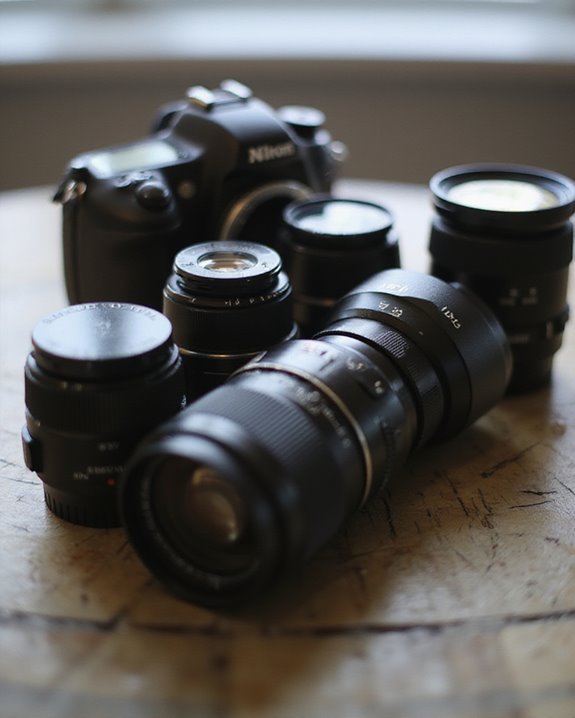
Before investing in any new lens, understanding compatibility with your existing camera system represents the most critical technical consideration you’ll face. The primary concern is matching the lens mount type to your camera body, as proprietary mounts like Canon EF, Nikon F, and Sony E aren’t interchangeable without modification. While lens adapters provide cross-brand flexibility, they often compromise autofocus speed and electronic communication between components.
We recommend verifying two additional compatibility factors: sensor format matching (full-frame vs. APS-C) and communication protocols for autofocus motors and image stabilization. Third-party lenses from manufacturers like Tamron and Sigma require careful verification through compatibility databases. Regular firmware updates can improve compatibility issues, especially with newer camera models, but won’t overcome fundamental mount incompatibilities or electronic protocol differences.
Weight and Size: Practical Considerations for Daily Use
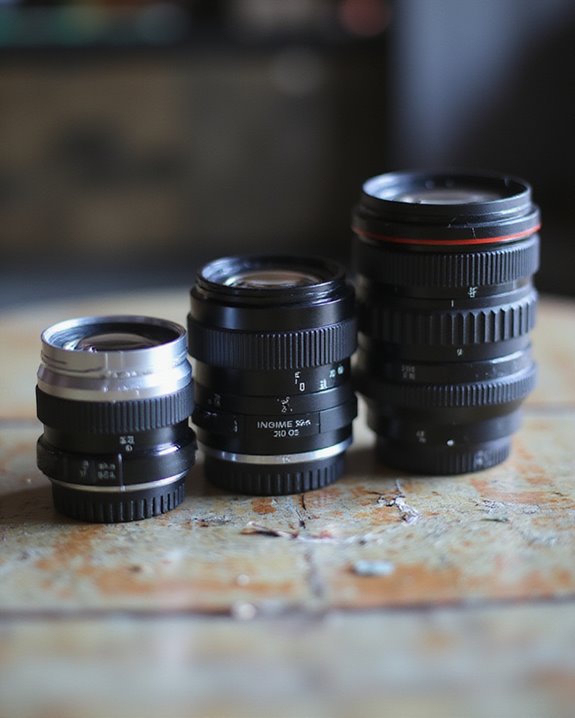
The physical dimensions of your camera lens might seem like secondary considerations when compared to optical performance, but they’ll greatly impact your day-to-day shooting experience and workflow. Lenses with wider maximum apertures (f/1.4 or f/2.8) require substantially larger front elements, resulting in increased weight and bulk that can affect handling comfort during extended shooting sessions. Professional telephoto lenses often weigh up to 10 pounds, necessitating additional support systems for stability.
When evaluating lens options, consider backpack compatibility for your intended usage scenarios. Travel photographers should prioritize weight reduction through multipurpose zoom lenses rather than carrying several large primes. Remember that complex optical designs containing 15-20 elements contribute substantially to overall mass, while simpler prime lenses typically offer more manageable dimensions for daily carry without sacrificing image quality.
Image Stabilization: When You Need It and When You Don’t
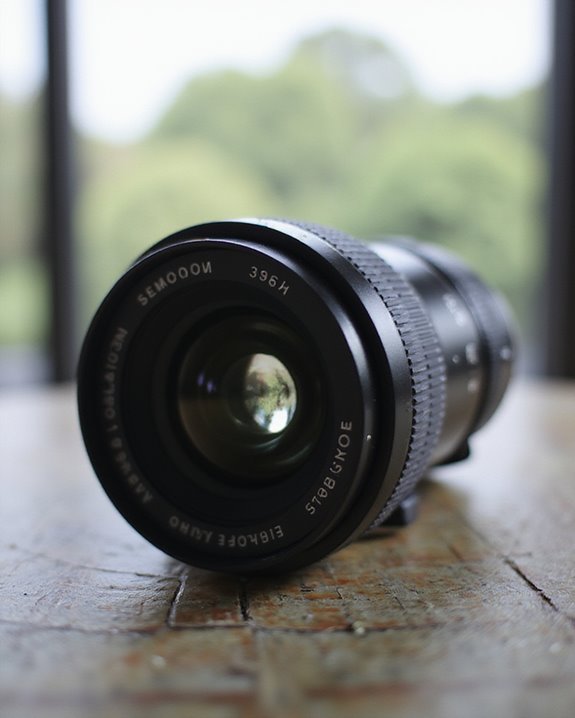
How greatly can image stabilization impact your photography, especially when shooting in challenging conditions? Modern IS technology, whether lens-based (VR, IS, OSS) or in-body (IBIS), can provide 4-6 stops of stabilization, dramatically improving results in low-light environments and with telephoto lenses. For Handheld Techniques, stabilization is essential when shooting below the reciprocal rule threshold, particularly in dim conditions where slower shutter speeds are necessary.
However, in Tripod Scenarios, we recommend disabling stabilization as it can actually introduce unwanted blur when the camera is already physically stabilized. Similarly, it’s often counterproductive when using fast shutter speeds (1/500s+), during intentional panning shots, or for astrophotography where the stabilization system might attempt to compensate for non-existent movement.
Special Features: Weather Sealing, Focus Motors, and Coatings
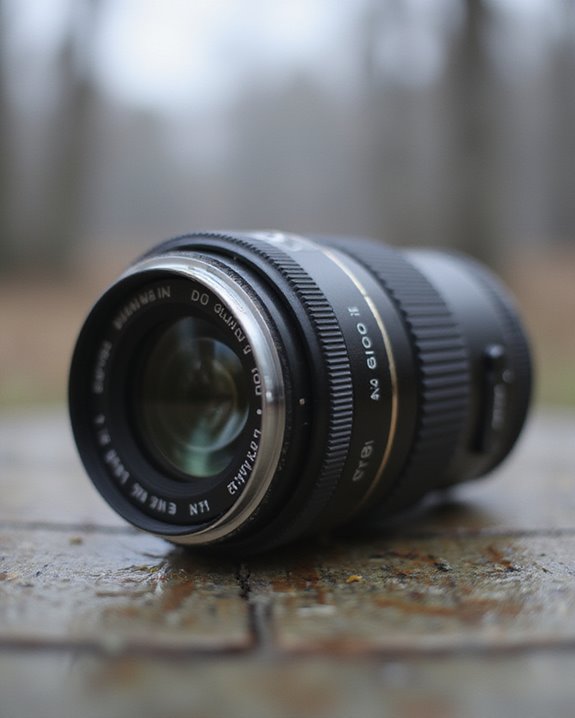
Beyond image stabilization, your lens’s special features can greatly impact both durability and image quality in real-world shooting situations. Modern Sealing Innovations provide essential protection for equipment used in harsh environments, with brands like Olympus and Lumix leading the industry in weatherproofing technology. When selecting focus motors, consider your subjects carefully; USM offers silent, rapid focusing for wildlife, while STM delivers the smooth changes video work demands. Coating Advances have revolutionized optical performance, with multicoating and nanocoating technologies substantially reducing flare and ghosting while enhancing light transmission. These features typically command premium prices, making it essential to assess your specific needs—frequent outdoor shooters will benefit substantially from weather sealing, while those working in controlled environments might prioritize advanced coating technologies for superior image quality.
Third-Party vs. Name Brand: Quality and Value Comparisons
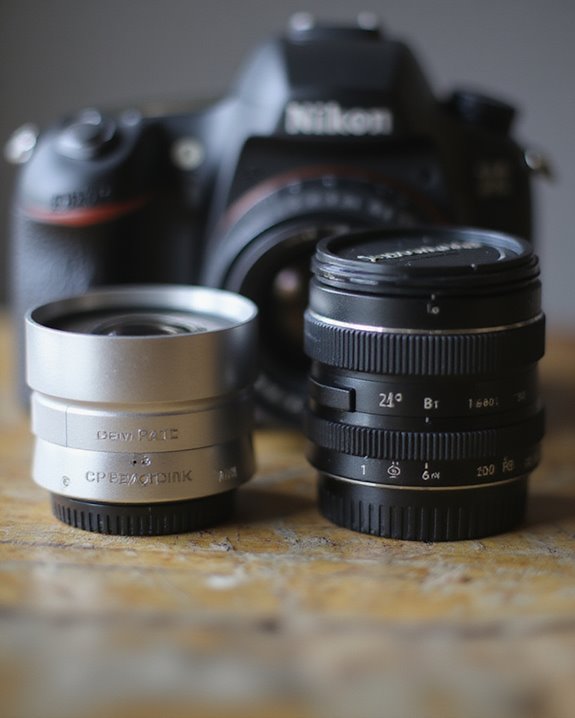
When selecting photography equipment, comparing third-party lenses with name-brand alternatives presents a complex value equation that extends far beyond mere price differences. Today’s third-party manufacturers have substantially narrowed quality gaps through Brand Innovation, offering weather-sealed options, advanced glass formulations, and extended warranties that challenge traditional perceptions.
While name-brand lenses typically cost 20-50% more than comparable third-party equivalents, they maintain better resale value and guarantee seamless system integration. Value Perception has evolved as companies like Sigma and Tamron now produce optics that rival or sometimes exceed name-brand performance in specific applications. Professional users must weigh compatibility assurance and consistent color science against cost savings and specialized features. We’re seeing this distinction blur further as third-party options gain traction among content creators and specialty photographers, though brand loyalty remains dominant in commercial settings.
Frequently Asked Questions
How Often Should I Clean My Camera Lenses?
Imagine the crisp clarity fading… We recommend cleaning your lenses only when visibly dirty. Our maintenance routine? Clean every 2-3 months, more in harsh conditions, less if stored safely. Don’t overdo it—excessive cleaning damages coatings.
Can Vintage Lenses Work Well on Modern Digital Cameras?
Yes, we’ve found vintage lenses create stunning optical bokeh on modern cameras. They’ll work beautifully with the right adapters, though you’ll often sacrifice autofocus. The unique character is worth the manual operation!
How Do ND and Polarizing Filters Affect Lens Performance?
Like sorcerers of light, we can tell you ND and polarizing filters alter lens performance. ND applications enable creative long exposures, while polarizer uses enhance colors and contrast. They’re powerful tools for your photographic arsenal.
Are Parfocal Lenses Worth the Extra Cost for Video?
We’d say parfocal lenses are worth it if you value Video Stability during zooms. Their key Parfocal Benefits include maintaining focus while changing focal length, eliminating distracting refocusing during critical shots.
How Does Focus Breathing Affect Video Recording Quality?
We notice, we cringe, we adapt. Focus breathing creates unwanted focal shift during recording, compromising video framing and professional quality. It’s especially distracting during focus changes, making our footage appear less polished and somewhat amateur.



